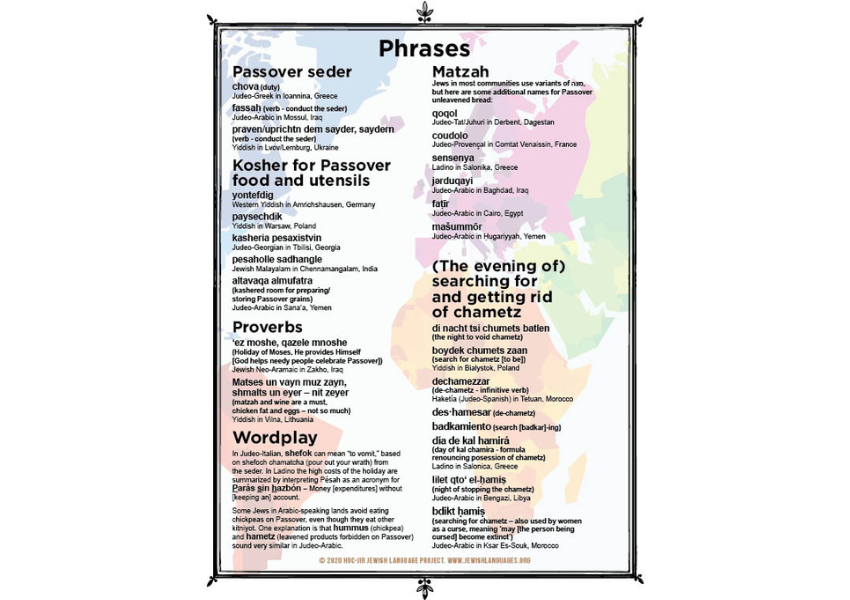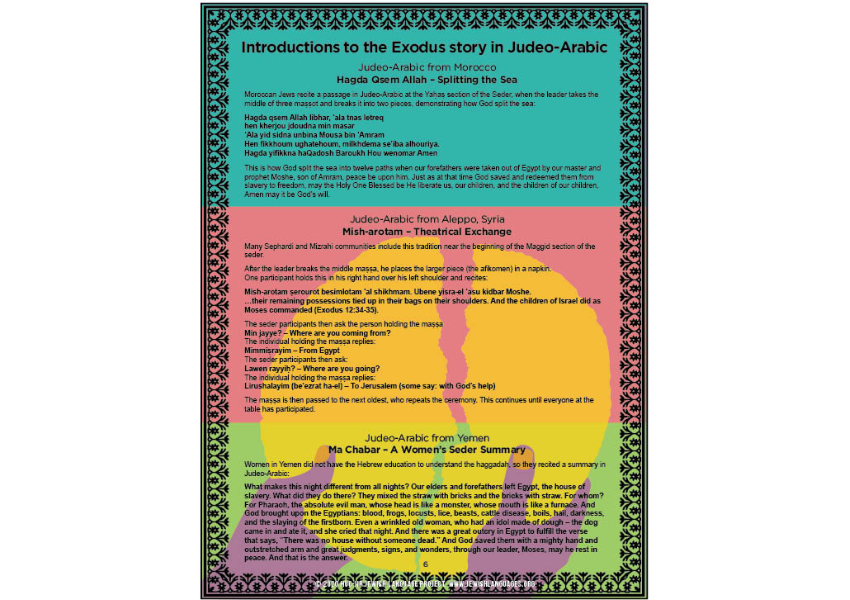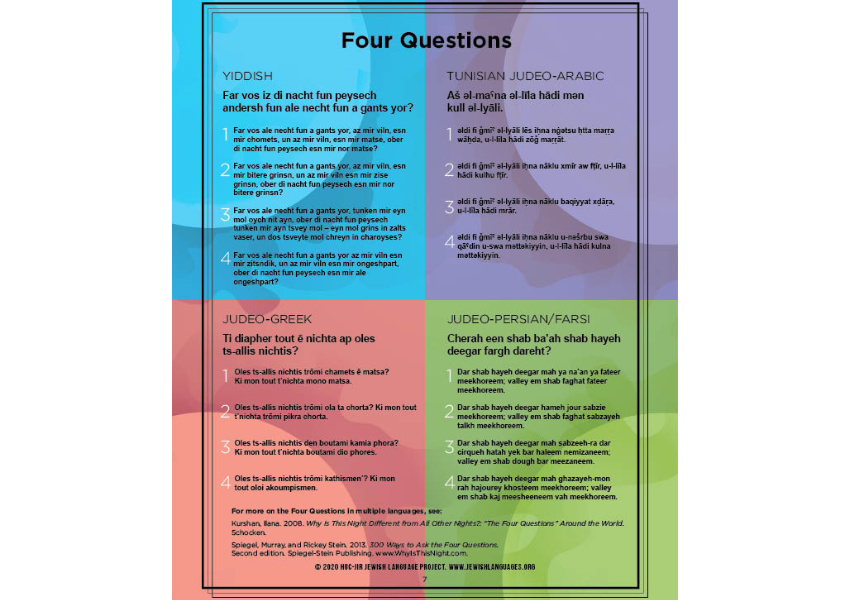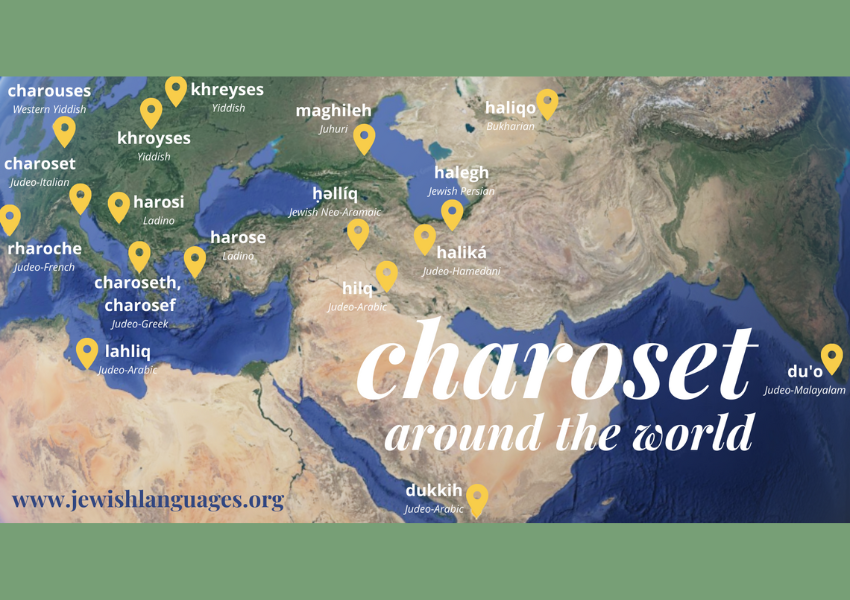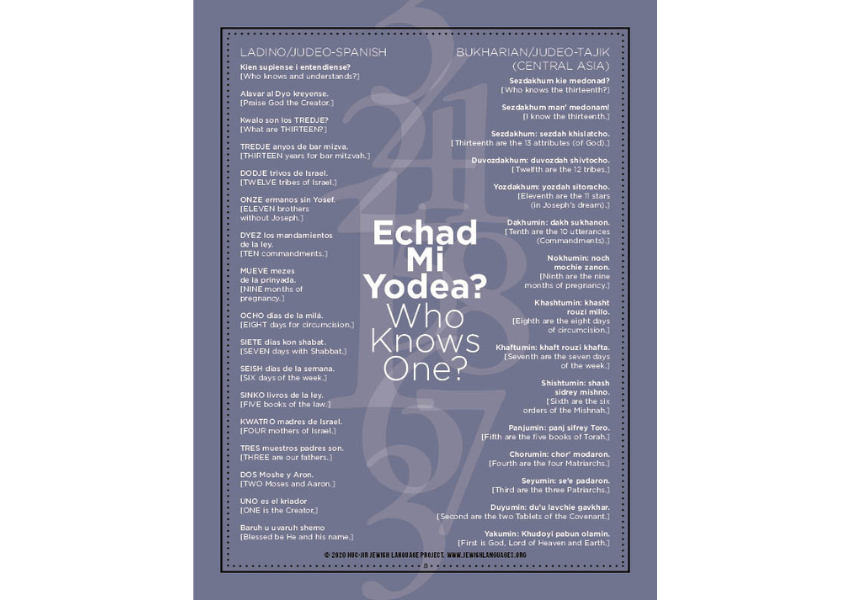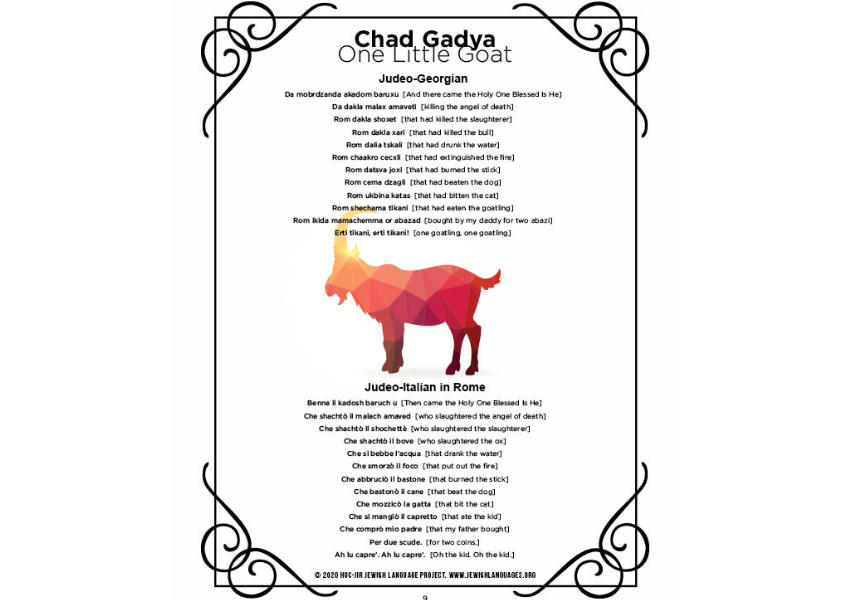Haggadot, Charoset, and Chag Sameach: Passover Around the Globe
Published Mar 10, 2023
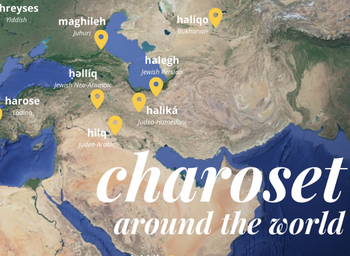
How do you say "Happy Passover"?
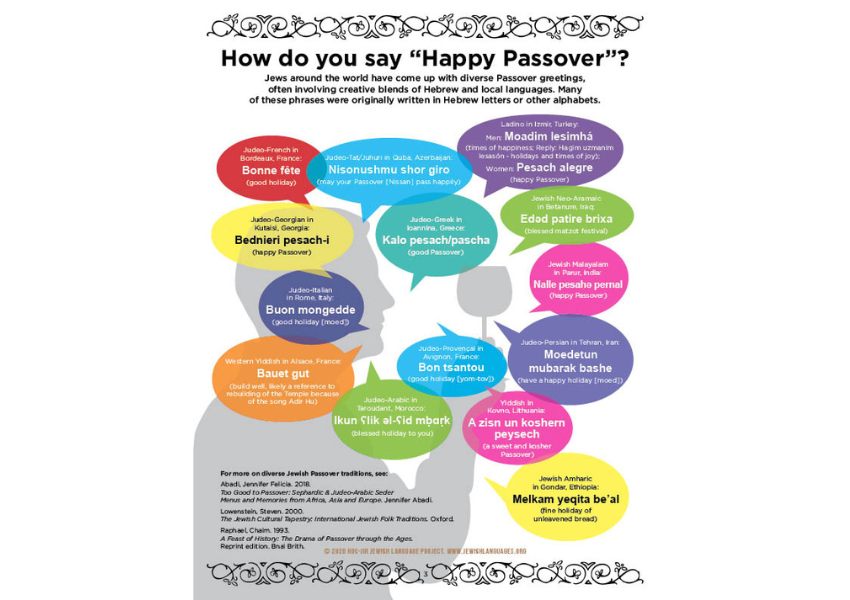
These resources provide us with insight into the similarities and differences among diverse groups of Jews in the celebration of Passover. For example, Jews around the world wish each other a happy Passover, but the words they use highlight different aspects: the holiday, the matzah, the dietary laws, and the rebuilding of the Temple. The inclusion of charoset is consistent in seders around the world, but different pronunciations and words (as well as different ingredients) are used for this sweet condiment in different regions. The same goes for “the bread of affliction”: while the word matzah is used in all Jewish communities, there are at least seven other unrelated names for matzah. When one reads “Chad Gadya” (One Little Goat) and “Echad Mi Yodea” (Who Knows One) in various languages, they will likely understand very little, but they might recognize some common Hebrew words, like Torah, shochet (slaughterer), and bar mitzvah. The Judeo-Arabic introductions to the Exodus story offer diverse approaches to the Magid, the “Telling” part of the seder. While we are all children of the same traditions, it is valuable to be introduced to customs one might not be familiar with from home.
This exhibit seeks to introduce various linguistic traditions to global Jewry, rekindling the connection with traditions that may have been lost to some families. Jewish families of all backgrounds can recite the Syrian mish-arotam theatrical exchange, try a different version of their favorite songs, or wish family members a happy holiday in a new Jewish language each night of Passover. These resources show the centrality of Passover, one of Judaism’s holiest holidays, to Jewish culture and tradition, and display how the preservation of customs has been held across so many widely dispersed languages and cultures. We invite you to draw inspiration from these images and consider using them to diversify your seder this year at home, and next year in Jerusalem.
Download copies of these resources here.
The HUC-JIR Jewish Language Project promotes research on, awareness about, and engagement surrounding the many languages spoken and written by Jews throughout history and around the world, from Ladino and Yiddish to Judeo-Arabic and Judeo-Malayalam.
Reflections
For language lovers:
Examine the different ways to say “Happy Passover” in Jewish languages – what Hebrew words can you find? Also, notice the meanings of these phrases – some are more general (happy holiday), while others refer to Passover, matzah, or dietary restrictions. What effect might these different greetings have on those who say and receive them?
For anyone who loves the songs at the end of the seder:
What differences can you find between the Ladino and Bukharian translations of "Echad Mi Yodea" (such as “Moses & Aaron” vs. “two Tablets of the Covenant”)?
For the youngest at the table:
Try reading the four questions in a Jewish language that you don’t typically use – how does it feel to explore a new language for this age-old tradition?
Want more?
Get curated JewishArts.org content in your inbox

